DENTO HON GYOKURO
DENTO HON GYOKURO
We talked with the producers of Gyokuro available on IKKYU - HIKARU, MIYA, MIYAKO, SATORI, SAYURI and KAZUHIRO - that you can find on our Gyokuro shop page and we are happy to share their insight and professional input with you.
You can compare all their properties with a single glance with our printable chart here. First of all, meet the people behind those delicious wonders, from left to right: Saga-based Tsuru san, and from Yame (Fukuoka), Kumiko Koga san, Takaki san, Kiya san and Yoshinobu Koga san. You can click on their picture to read their full profile.
Gyokuro is rare, incredibly difficult to make and requires years of skills to perfect. Its leaves are beautiful, some even say lustrous.
For all of those reasons, it is an expensive tea and is considered a luxury even in Japan. Compared to Sencha, Gyokuro is usually smoother, more full-bodied, packed with umami and less astringent thanks to its high levels of L-theanine and the lower water temperature used to brew it.
Its scent is very rich, its taste thick and mellow. When cultivated according to traditional methods, its fragrance can be up to five times more powerful than Sencha.
Much like an expensive glass of red wine, we recommend letting a small mouthful swirl on your tongue to experience fully its flavors. A refreshing aftertaste will follow, but still, you will enjoy the first impression for a long time.
This is especially true of Yame-grown gyokuro; green tea specialists praise its long-lasting taste compared to gyokuro grown in Uji area for example.
The processing method of Gyokuro is similar to Sencha as the leaves are steamed. The main difference – and challenge! – is found before that, during the cultivation and plucking process. About twenty days before harvest, tea farmers cover the tea fields to shield the leaves from sunlight. Producers specialized in the most traditional form of Gyokuro (Dento Hon Gyokuro) use only rice straw screens, not synthetics fiber sheets.
The straw taste and aroma transfer to the leaves and offer an additional touch that connoisseurs love, as well as much more fragrance and taste. The umami lingers in the mouth for a much longer time than with standard Gyokuro. Shading has an incredibly important impact on the leaves. The characteristic umami taste of green tea comes from the amount of L-theanine in the leaves.
Photosynthesis transforms this nutrient into catechin. When you block or at least limit this process, the level of L-theanine remains high, and the umami taste is therefore powerful. Let's look now at how Yame Gyokuro producers proceed.
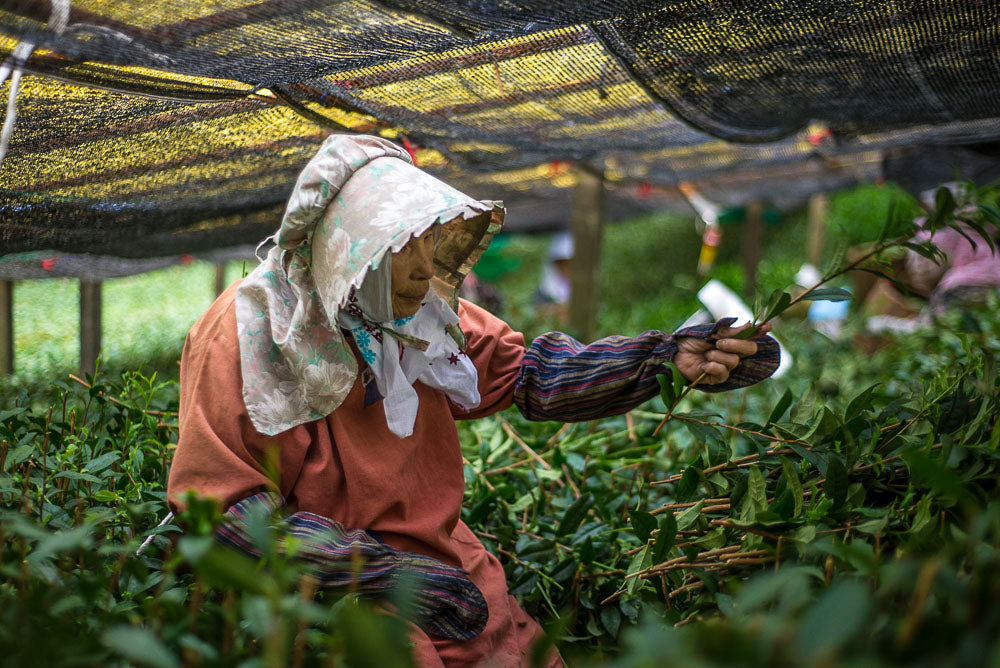
When the first new shoots of the year appear, straw screens are placed over concrete pillars and pipes, thus covering the tea bushes. Although this means extra work, the results are better because synthetic fiber generate too much heat.
At first, only 85% of the sunlight is cut; then, ten days before harvest, more straw is gradually added, depending on temperature and weather conditions, until the shading reaches 98%. Doing so puts the plants under moderate stress and will slow the growth of young shoots. They are forced to grow upwards, and those efforts are the source of the delicious flavor of Gyokuro. For harvest, the technique is also different from what is used for Sencha.
Machine-picking isn’t possible because only the uppermost section of the stem should be plucked, along with two leaves. The hand plucking itself is a specific technique that is difficult learn. Nowadays, it’s usually elderly ladies who spend hours under the straw covers picking the leaves.
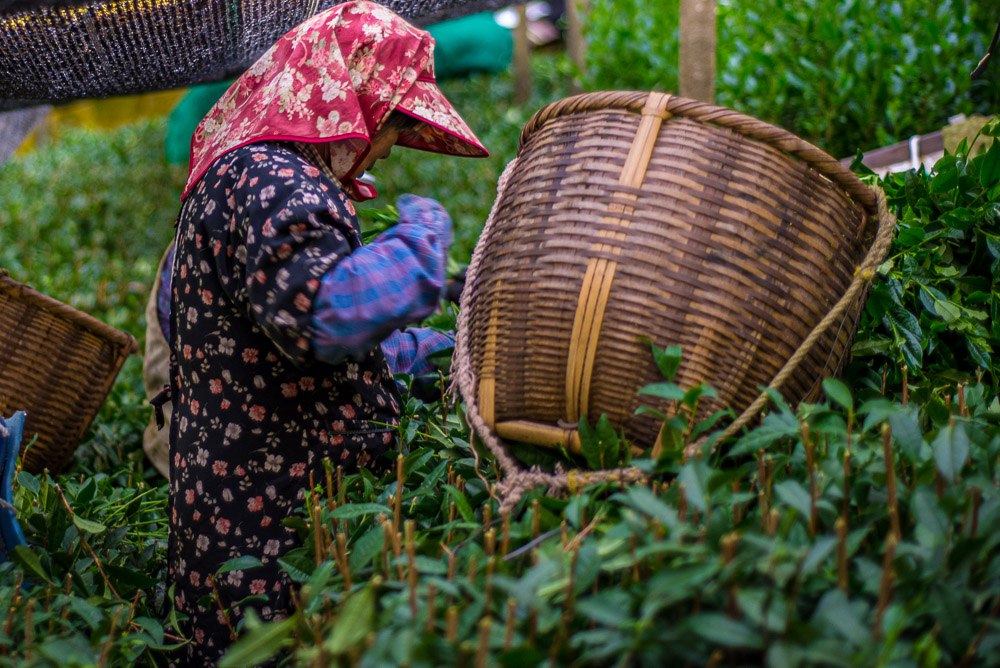
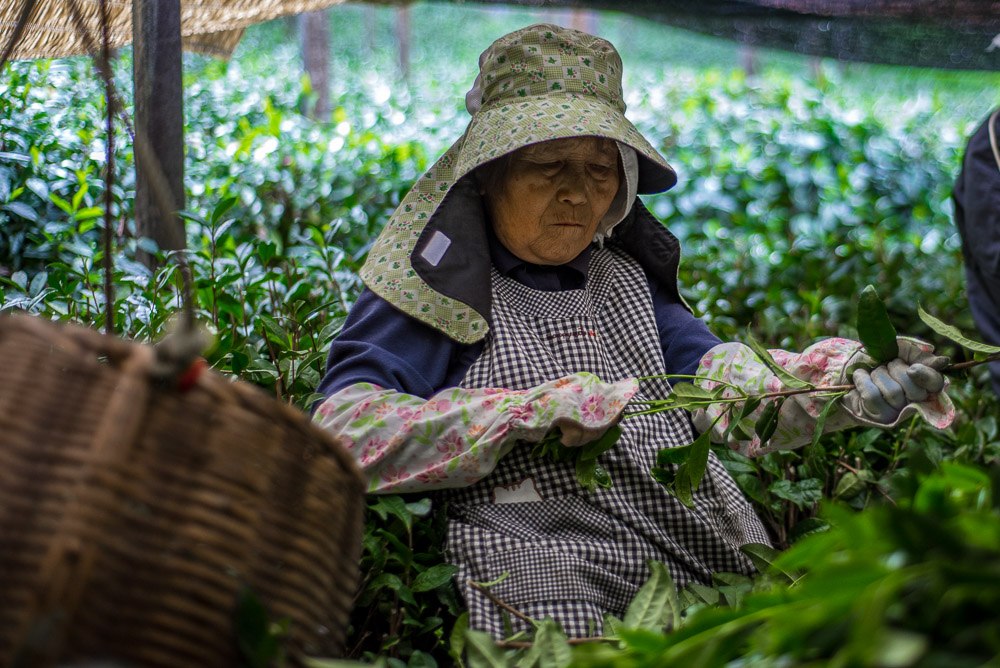

Brewing Gyokuro can seem challenging, and without a doubt the technique needs a bit more attention than other green teas. But after tasting your first sips of this exceptional drink you will feel rewarded. After all, your first Gyokuro is well worth the extra time and patience.
When it comes to brewing, the differences between Gyokuro and other green teas are water temperature, quantities and brewing time.
It is best to use a small-size Japanese tea pot (kyusu) to brew Gyokuro, because the water quantity is small. If you are a purist, you can also purchase two types of kyusu made only for brewing Gyokuro : a flat Houhin or Hōhin, and a shiboridashi.
In both cases, we recommend using a container to pour water to cool it. Any cup or mug will do, but in Japan, we use another utensil called yuzamashi.
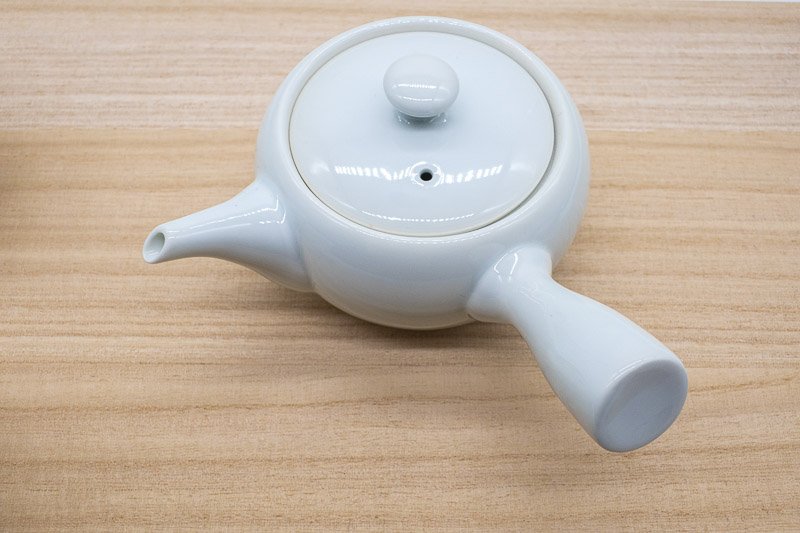
Porcelain teapot from Hasami
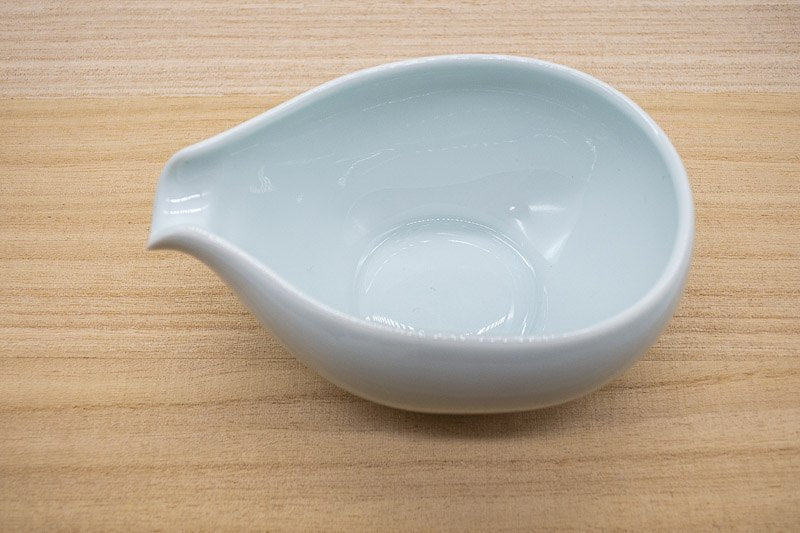
Water cooler : Yuzamashi
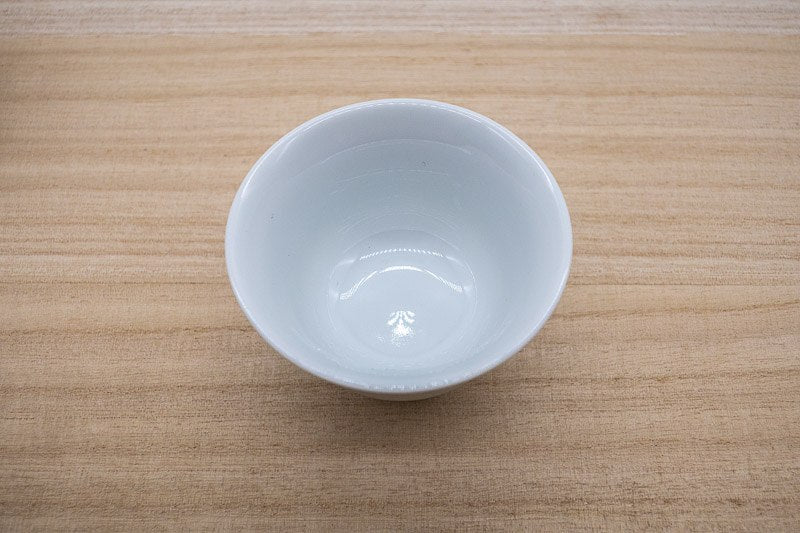
Gyokuro tea cup, small in size
In order to get the most amount of umami, you usually use a bit more tea leaves for brewing Gyokuro than Sencha or other green teas. The recommended amount is between 4 to 5 grams of tea leaves per cup / person.
On the other hand, for your first brew, you should use a small amount of water, about 20ml / per cup and sip carefully in order to fully enjoy the experience. Since we always recommend to prepare 2 cups per serving you will use around 40ml of water.
Boiling water must be brought to about 50°C ~ 60°C (122°F ~ 140°F), although some tea masters lower it to 45°C or even 35°C, and the brewing time is between 2 and 3 minutes. If brewed too hot, the Gyokuro will turn bitter, if brewed too quickly, it will not be sweet enough.
This is where the cooling utensils come to play. Each time the water is poured from one to another, the temperature is lowered by about 10°C, so you should transfer water about 4 times. When you have reached the right temperature, pour 20 ml per person in the tea cup (even if you are preparing tea for only one person, prepare for two). Let the tea brew for 2-3 minutes and then poor it into each cup, little by little, before enjoying your precious beverage.
Premium Gyokuro can be re-steeped several times, some of them even up to ten times! After the first brew, you will need to slightly increase the temperature while shortening the time of steep. If you started at 40C (104F) increase the temperature to 50C for about 30 to 60 seconds depending on your taste. Third brew will be at 60C (140F) for about 2 minutes or so.
Alternatively you can also brew cold brew Gyokuro with... ice. It's a rather long process but fail-free and an incredible refreshing way to enjoy the beverage. The recipe is quite simple : add 90 to 150g of pure ice into a teapot with 8 to 10g of Gyokuro in it, let it rest overnight in your fridge: it's ready ! You can also let the ice melt at room temperature, it will be faster, but it will still need a couple of hours.
Hot Brewing With A Flat Teapot (Hohin)
When we received this new flat teapot we obviously needed to try it ! So we opened a Gyokuro for the occasion (there are many ;) and after three brews we finished the ceremonial by eating the leaves (with salt, but ponzu sauce is fine too !). Before brewing we "steamed" the leaves by pouring hot water in the teapot for a minute, remove the water and quickly dry the pot. After that we put the fresh leaves into the teapot and closed it, while we prepared the water for the brewing.
This takes a couple of minutes or more, before starting to brew I opened the lid in order to enjoy the steamed leaves perfumes, already quite strong ! After that I poured the water and waited the right amount of time. Because there is no filter, just a lid that you need to keep as close to the spout, it was a bit hard at first to adjust to pour into the the small cups. Finally, we could taste this fine Gyokuro, it's long lasting umami and sweetness. Having a look at the brewed leaves and intense color it was impossible to resist at such wonderful appetizer on our balcony !
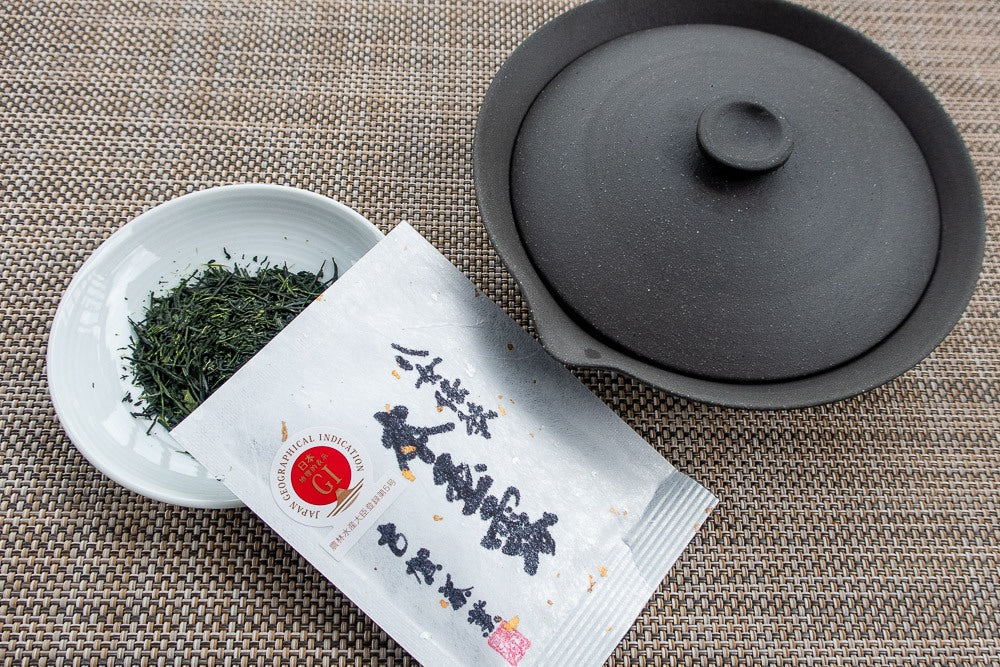
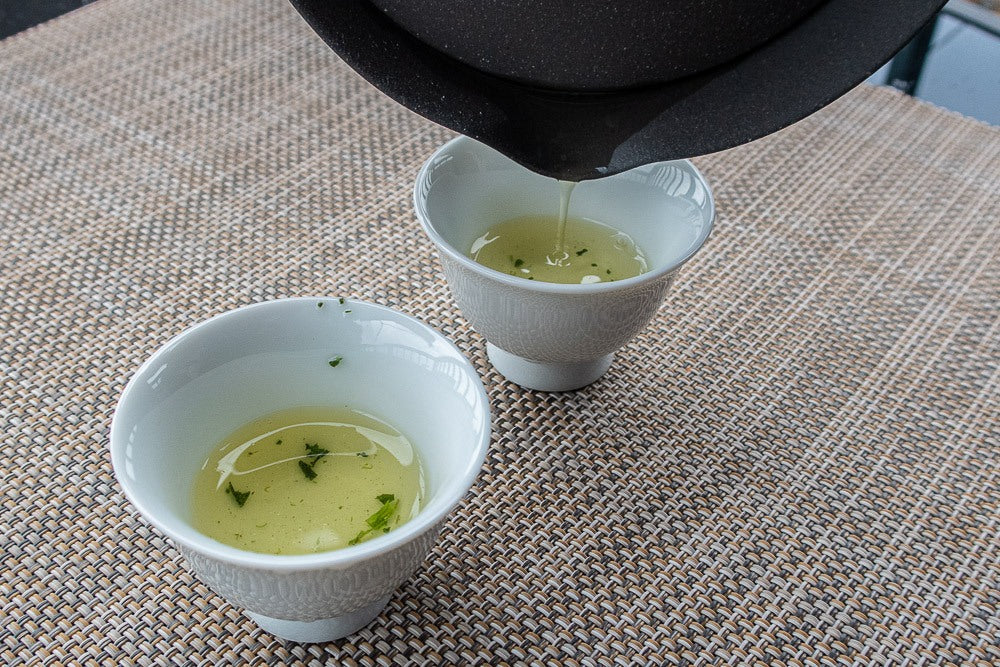
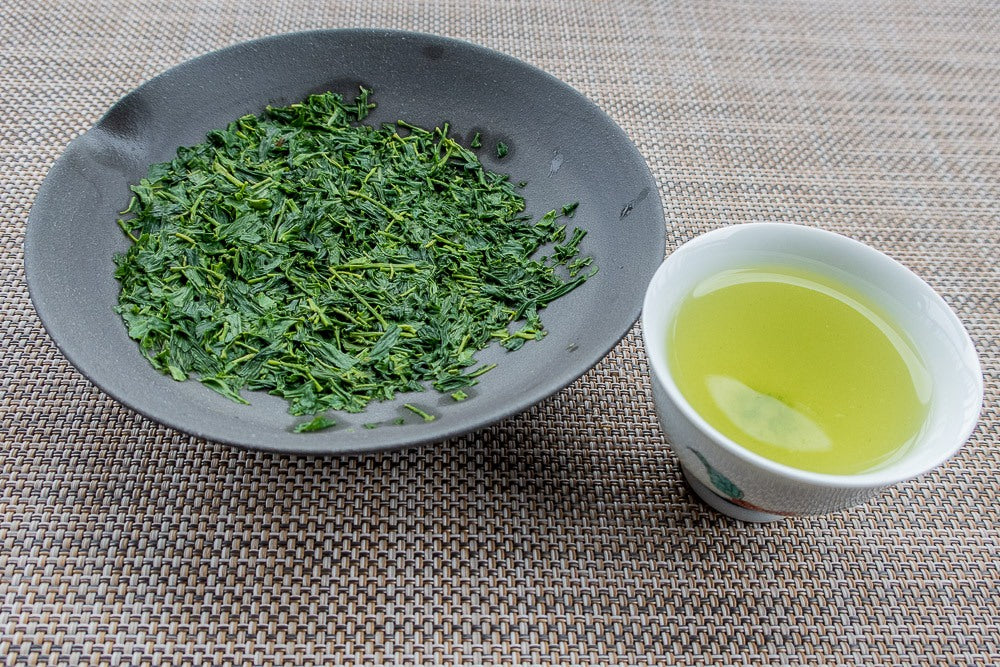
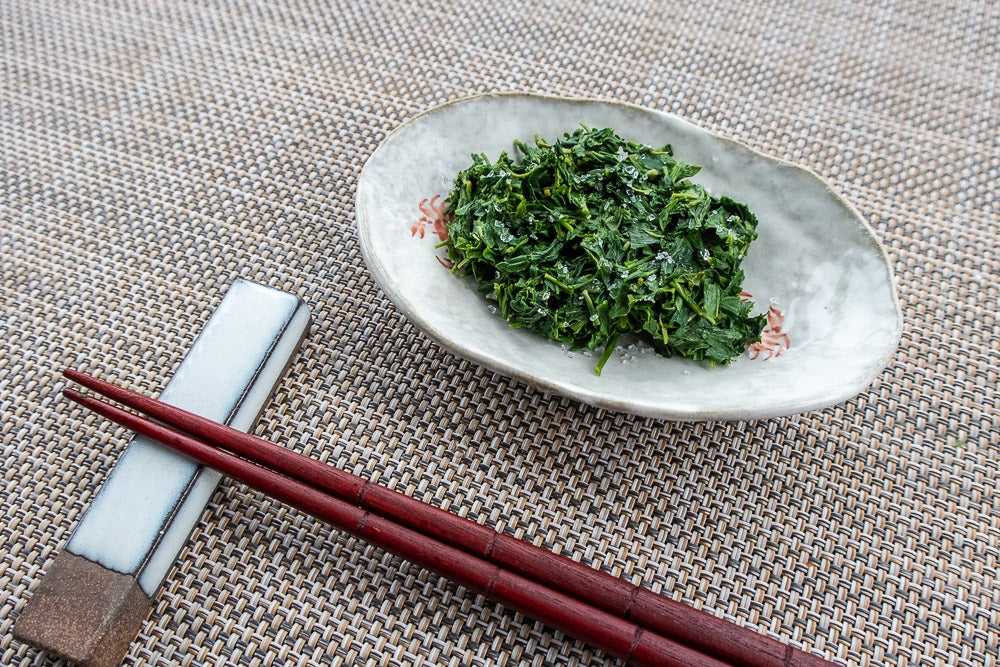
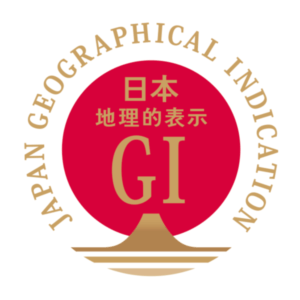
The tea producing area of Yame, in Fukuoka (northern Kyushu), produces more than 50% of all Gyokuro in Japan. This is where the traditional know-how is still kept alive, including by the younger generations, despite the hard work that making Dento Hon Gyokuro means.
It is also the reason why it is now one of the few traditional produces of Japan that have been granted the Geographical Indication label. English registration patent can be found here. Note that not all of them have gone through the complex paperwork required, essentially for budget reasons. So the lack of this label doesn't mean that a Yame Dento Hon Gyokuro hasn't been made according to the rigorous techniques required.
Yame Gyokuro producers only use rice straw covers. In fact, it is now the only tea-producing region in Japan that still uses them, and where the weaving machines can be found. Thanks to the temperature difference in the morning and evening, morning fog is a regular occurrence in Yame area.
Along with low sunlight, this makes the semi-mountainous area perfect for tea production. This great temperature difference also causes lower respiration of the plants at night, leading to a build-up of amino acids in the leaves that are savory components.
Yame is located in the southern part of Japan, in Kyushu, the third largest island among Japan's five main islands. Yame is about 60 to 90 minutes from Fukuoka city, the main city of Kyushu.

In Yame, Gyokuro producers are repeatedly crowned the best in Japan and strive, year after year, to make the best tea possible. Around two hundred growers have dedicated themselves to this luxurious green tea, more than anywhere else, and let the tea bushes grow naturally.
This is why Yame Dento Hon Gyokuro is so special. Its beautiful appearance, deep, complex flavor, and distinctive aroma reflect the dedication, passion, meticulous care, and extensive experience of the craftsmen who produce it. IKKYU is proud to contribute to promoting such an incredible work with tea lovers all over the world.
If you have questions about Gyokuro in general, or any other tea, remember that we are always available to answer you either by e-mail (please note that time-difference occurs as we are located in Japan).